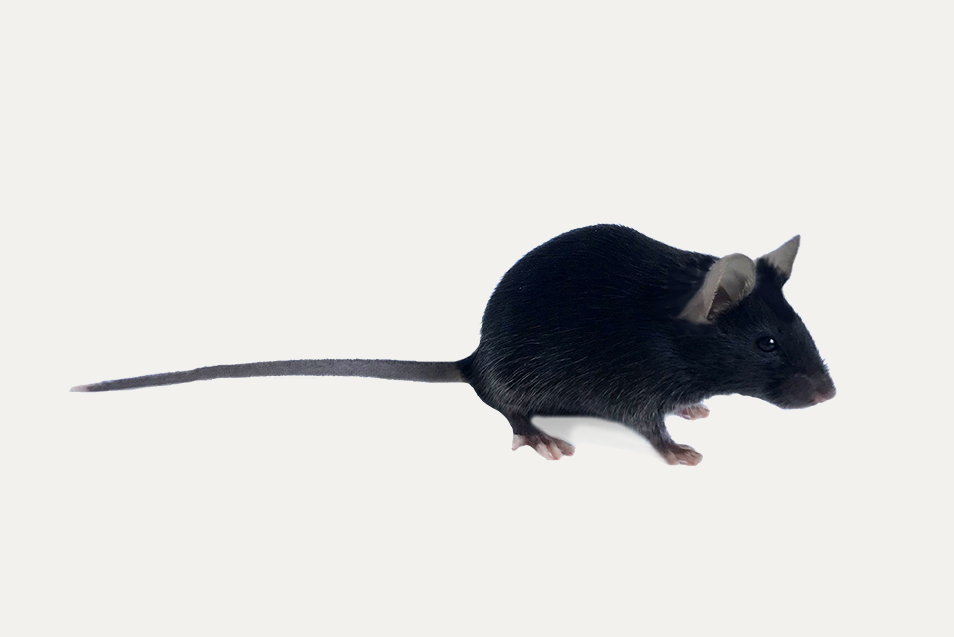NXG-HIS Humanized Mouse
The reference model for immunotherapeutics development


Model characteristics
Type :
Inbred transgenic mouse, GEMM
Strain name:
NOD-Prkdcscid-Il2rgtm1/Rj
Origin:
JANVIER LABS, in 2021
Colour and related genotype:
Albino mouse
Breeding:
CD34 from blood cord.
Treatment: Busulfan
Description of our model and application areas
Humanized CD34+ mice are the epitome of mice models in terms of surrogate models for humans. Application field ranges from immunology, oncology, infectious diseases and more. This innovative approach bridges the gap between in vitro studies and clinical trials, providing a platform for more accurate and translational investigations in immunology and regenerative medicine.
In that frame, NXG-HIS mice are your best ally for all your research by relying on one of the best immunodeficient models and an optimized protocol allowing for the optimal development of multi-lineage human immune cells.
The NXG mouse model:
The NXG mouse is an inbred strain model on the NOD genetic background, sharing similarities with other strains like NSG, NcG, NOG (refer to the NXG technical sheet for greater details). It carries two crucial mutations: Prkdcscid, known as “SCID,” which inhibits T and B cell development, resulting in their absence; and Il2rgtm1, a knockout of the interleukin-2 receptor subunit gamma gene, essential for various immune cells, causing severe immunodeficiency with the absence of T, B, and NK lymphocytic cells. Additionally, the NXG strain expresses the NOD variant of the Sirpa gene, promoting reduced phagocytosis of transplanted human cells due to cross-recognition with CD47 ligands on human cells. All these factors contribute to establishing the NXG strain as one of the best performing models in the context of humanizing the immune system.
Main application and research fields
Humanization process
The process of humanization involves injecting cord blood-derived human CD34+ cells into mice after inducing myeloablation. This technique allows for the development of a functional and multi-lineage human immune system within the murine host. The use of cord blood as a source of hematopoietic stem cells offers advantages such as accessibility, ethical considerations, and the potential for diverse immune cell populations.
Quality of the immune system engraftment is assessed between weeks 12-14 by flow cytometry. More than 85% of our mice successfully met the quality control threshold, exhibiting over 25% of human CD45+ cells in the peripheral blood.
NXG-HIS mice stand as one of the most robust model of immune system humanized mice showcasing unparalleled homogeneity and unmatched robustness.
Services
The scientific team at Janvier Labs is always available to assist you in optimizing the utilization of our NXG-HIS mice. Reach out to us to explore how we can contribute to the success of
your experiments.
• Typically, our mice, along with a comprehensive report on human system engraftment and sanitary status, are shipped to customers around week 16 post-engraftment. But we can offer to liberate the animals sooner to accommodate your needs.
• Engraftment of CD34+ cells carrying a specific HLA from a donor can be a valuable tool for your research. We can routinely offer engraftment with HLA-A*02:01 donors but can accommodate additional requests.
• If specific percentages of the lymphoid and myeloid compartments are desired to tailor the use of NXG-HIS mice to your research needs, we can selectively choose animals that best suit your requirements.
NXG-HIS peripheral blood


Growth curve


Quality control of the humanization rate
Quality control allows to measure the relative humanization rate of humanized mice in the peripheral blood. The standardization of quality control is performed by flow cytometry of the different human populations: hematopoietic, lymphoid and myeloid. Each NXG-HIS is tested and analyzed before sending and use. NXG-HIS mice are produced with SOPF status. Each batch provided is supplied with a list showing the animal repartition according to the different CD34+ donors.
You may also be interested in these models
Research Model Catalog
〉


